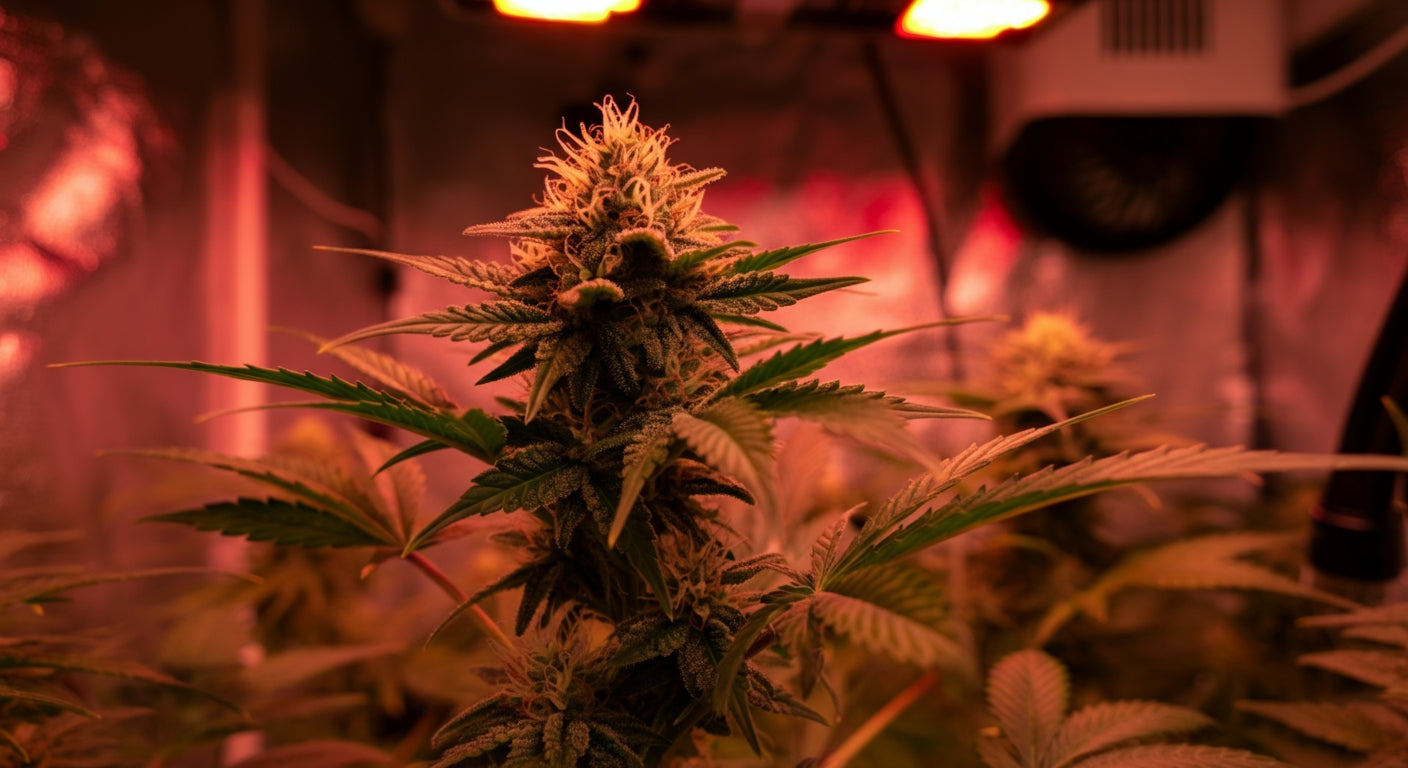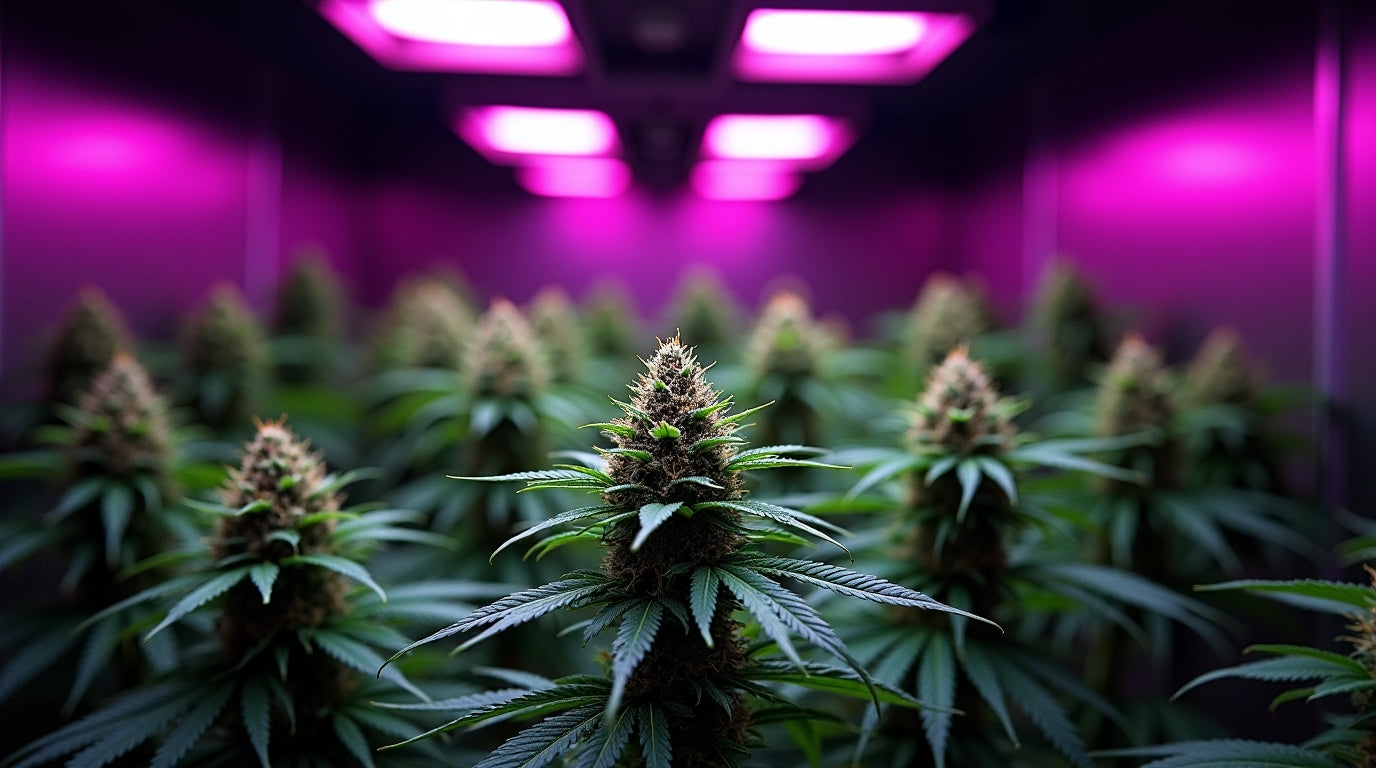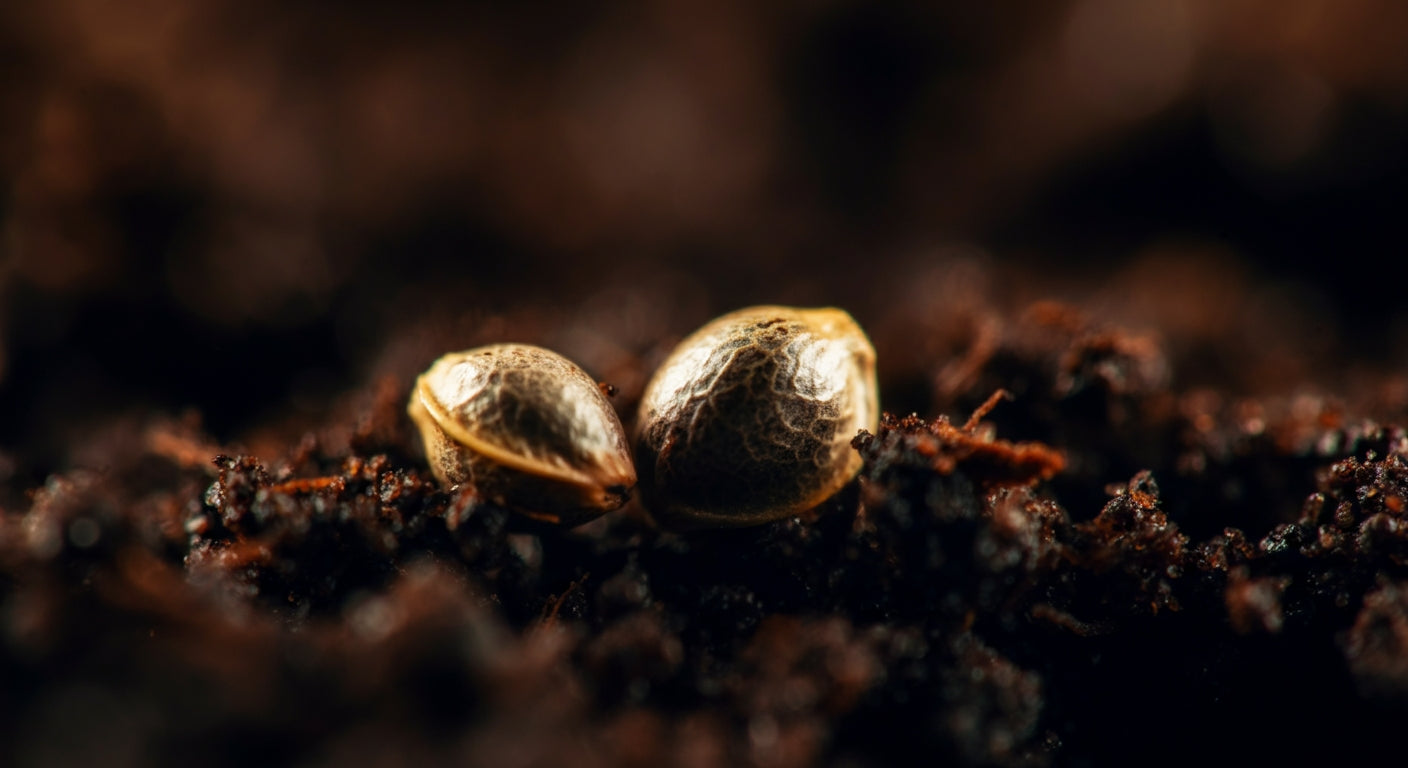
How to Grow Weed Plants: Your Complete Guide to Multi-Plant Cannabis Cultivation
Growing multiple weed plants simultaneously presents unique challenges and opportunities compared to single-plant cultivation. Managing several cannabis plants requires strategic planning, proper space allocation, and specialized techniques to ensure each plant receives optimal care while maximizing overall yield and quality.
Whether you're scaling up from single-plant grows or starting fresh with multiple plants, this comprehensive guide covers everything you need to successfully cultivate several cannabis plants together. From initial planning through harvest processing, you'll learn proven techniques for managing plant populations effectively.
Multi-plant growing offers increased yields, genetic diversity, and the ability to experiment with different strains simultaneously, making it an attractive option for serious home cultivators looking to maximize their growing potential.
Planning Your Multi-Plant Cannabis Operation
Determining Optimal Plant Count
The number of cannabis plants you can successfully grow depends on several critical factors that must be carefully balanced to ensure optimal results for each plant.
Key Planning Considerations:
- Available Space: Physical dimensions determine maximum plant capacity
- Legal Limits: Local laws often specify maximum plant counts per household
- Experience Level: Beginners should start with fewer plants to master techniques
- Time Investment: More plants require proportionally more daily maintenance
- Equipment Capacity: Lighting, ventilation, and nutrients must scale with plant count
Choosing grow tent size is crucial for multi-plant success, as inadequate space leads to plant competition and reduced yields across your entire crop.
Space Requirements by Plant Count
Small Multi-Plant Operations (2-4 plants):
- 3x3 grow tent: Accommodates 2-4 medium plants with training
- Floor Space: 9 square feet provides adequate room for plant development
- Height Requirements: 6-7 feet minimum for proper lighting distance
Medium Operations (4-8 plants):
- 4x4 grow tent: Supports 4-6 larger plants or 6-8 smaller ones
- [Floor Space: 16 square feet allows flexible plant arrangements
- Training Opportunities: Sufficient space for advanced techniques
Larger Operations (8+ plants):
- 5x5 grow tent or larger: Accommodates serious multi-plant cultivation
- Commercial Considerations: May require dedicated grow room setups
- Infrastructure Needs: Substantial electrical and ventilation requirements
Understanding how many plants fit in different tent sizes helps optimize your space allocation and prevents overcrowding issues.

Equipment Scaling for Multiple Plants
Lighting Considerations for Plant Populations
Growing multiple cannabis plants requires more sophisticated lighting approaches than single-plant setups to ensure even coverage and optimal intensity throughout the canopy.
Lighting Scaling Strategies:
- Single Large Light: Xi750 LED grow light for large tent coverage
- Multiple Medium Lights: Two Xi420 LED lights for flexible positioning
- Light Distribution: Ensure all plants receive 600-1000 PPFD during flowering
Light Coverage Calculation:
- 3x3 tent: 300-400W LED provides adequate coverage for 2-4 plants
- 4x4 tent: 500-600W LED supports 4-6 plants effectively
- 5x5 tent: 750-900W LED accommodates 6-9 plants optimally
Ventilation Systems for Multiple Plants
Proper grow tent ventilation becomes increasingly critical as plant count increases due to higher transpiration rates and heat generation.
Ventilation Scaling Requirements:
- Air Exchange: Calculate tent volume × 3-5 air changes per minute
- Carbon Filtration: Size filters based on CFM requirements for odor control
- Internal Circulation: Add oscillating fans as plant density increases
Multi-Plant Ventilation Setup:
- Exhaust System: Inline fan rated 25% above calculated CFM needs
- Intake System: Passive or active intake matching exhaust capacity
- Air Distribution: Multiple circulation fans prevent stagnant air pockets
Nutrient and Water Systems
Managing nutrition for multiple plants requires systems that can deliver consistent feeding while accommodating individual plant needs.
Feeding System Options:
- Individual Hand Watering: Most control but labor-intensive
- Drip Systems: Automated delivery with individual plant control
- Flood and Drain: Efficient for uniform feeding schedules
- Deep Water Culture: Advanced hydroponic systems for maximum growth rates
Multi-Plant Growing Techniques
Plant Training for Multiple Cannabis Plants
Training techniques become essential when growing multiple plants to maximize space utilization and ensure even light distribution across all plants.
Screen of Green (SCROG) for Plant Populations
Trellis netting techniques work exceptionally well for managing multiple plants by creating uniform canopies that optimize light exposure.
SCROG Implementation for Multiple Plants:
- Net Placement: Install trellis 12-18 inches above plant containers
- Plant Training: Weave branches through net squares as plants grow
- Canopy Management: Maintain even height across all plants
- Light Optimization: Uniform canopy ensures consistent light penetration
SCROG Benefits for Multi-Plant Grows:
- Space Efficiency: Maximizes yield per square foot
- Light Distribution: Even canopy receives uniform lighting
- Air Circulation: Open canopy structure improves airflow
- Support System: Net supports heavy flowering branches
Low Stress Training for Plant Populations
LST techniques work well for multiple plants by creating bushier growth patterns that utilize available space more efficiently.
LST Strategies for Multiple Plants:
- Branch Spreading: Tie down main branches to create wider plants
- Canopy Leveling: Maintain consistent heights across all plants
- Space Optimization: Train plants to fill available tent space
- Yield Maximization: More flowering sites per plant increase total harvest
Advanced Training: Supercropping
Supercropping techniques can help manage height differences between plants while strengthening stems for heavier flowering branches.
Multi-Plant Supercropping Applications:
- Height Control: Reduce tall plants to match shorter ones
- Stem Strengthening: Prepare plants for heavy bud development
- Stress Response: Trigger increased resin production
- Canopy Management: Create uniform growing heights

Managing Multiple Plants Through Growth Stages
Seedling and Vegetative Management
Growing multiple plants from seedlings requires attention to individual development rates while maintaining group environmental conditions.
Seedling Stage Considerations:
- Individual Monitoring: Track each plant's development separately
- Growth Rate Variations: Account for different strain characteristics
- Space Allocation: Provide adequate room for root development
- Environmental Consistency: Maintain optimal conditions for all plants
Vegetative Stage Management:
- Feeding Schedules: Adjust nutrients based on plant size variations
- Training Implementation: Begin LST when plants reach appropriate size
- Space Planning: Position plants to optimize light exposure
- Height Management: Use training to maintain canopy uniformity
Flowering Stage Coordination
The flowering stage presents unique challenges when managing multiple plants, particularly when growing different strains with varying flowering periods.
Flowering Considerations for Multiple Plants:
- Light Schedule: Maintain strict 12/12 photoperiod for all plants
- Strain Timing: Account for different flowering durations
- Environmental Adjustments: Lower humidity for all plants simultaneously
- Support Systems: Install trellis netting before flowering stretch
Harvest Timing Coordination
Managing harvest timing for multiple plants requires careful planning, especially when growing different strains with varying maturation periods.
Multi-Plant Harvest Strategies:
- Staggered Harvesting: Harvest plants as they reach individual maturity
- Batch Processing: Group similar-timing strains for efficient processing
- Equipment Planning: Ensure adequate drying and curing space
- Quality Maintenance: Don't compromise individual plant quality for convenience
Space Optimization Techniques
Maximizing Tent Capacity
Efficient space utilization becomes critical when growing multiple plants to prevent overcrowding while maximizing yield potential.
Space Optimization Strategies:
- Vertical Growing: Use height extension kits for taller plants
- Plant Arrangement: Position taller plants toward tent center
- Equipment Placement: Optimize fan and filter positioning
- Access Paths: Maintain working space for plant maintenance
Container Selection for Multiple Plants
Container choice significantly impacts space utilization and plant development when growing multiple cannabis plants.
Container Considerations:
- Size Matching: Use consistent container sizes for uniform plants
- Space Efficiency: Square containers utilize floor space better than round
- Drainage Systems: Ensure proper drainage for all containers
- Mobility: Consider wheeled platforms for easier plant positioning
Container Size Recommendations:
- 3-gallon containers: 4-6 plants in 4x4 tent
- 5-gallon containers: 2-4 plants in 4x4 tent
- 7-gallon containers: 1-2 plants in 4x4 tent
Environmental Management for Plant Populations
Climate Control Scaling
Managing environmental conditions for multiple plants requires more sophisticated control systems due to increased transpiration and heat generation.
Temperature Management:
- Heat Load Calculation: Account for multiple plant transpiration
- Ventilation Scaling: Increase air exchange rates proportionally
- Hot Spot Prevention: Use multiple circulation fans for even distribution
- Seasonal Adjustments: Adapt cooling/heating for ambient changes
Humidity Control for Multiple Plants:
- Transpiration Effects: Multiple plants significantly increase humidity
- Disease Prevention: Maintain 40-50% RH during flowering
- Air Movement: Ensure adequate airflow around all plants
- Monitoring Systems: Use multiple sensors throughout growing space
Air Quality Management
Multiple plants generate more odors and require enhanced filtration systems to maintain discretion and air quality.
Odor Control Scaling:
- Carbon Filter Sizing: Calculate based on tent volume and plant count
- Air Scrubbing: Consider supplemental odor control systems
- Negative Pressure: Maintain slight vacuum to contain odors
- Filter Maintenance: Replace filters more frequently with multiple plants
Pest and Disease Management
Prevention Strategies for Plant Populations
Managing pests and diseases becomes more critical with multiple plants, as problems can spread rapidly throughout the entire crop.
Integrated Pest Management (IPM):
- Regular Inspections: Check all plants weekly for early detection
- Quarantine Protocols: Isolate affected plants immediately
- Preventive Treatments: Use beneficial insects and organic sprays
- Environmental Controls: Maintain conditions unfavorable to pests
Disease Prevention:
- Air Circulation: Ensure good airflow around all plants
- Humidity Management: Prevent conditions favoring fungal growth
- Sanitation Practices: Maintain clean growing environment
- Plant Spacing: Avoid overcrowding that promotes disease spread
Treatment Strategies
When issues arise in multi-plant grows, treatment approaches must consider the entire plant population while addressing individual problems.
Treatment Considerations:
- Selective Treatment: Target affected plants without harming healthy ones
- System-Wide Prevention: Implement preventive measures for all plants
- Treatment Timing: Coordinate treatments with growth stages
- Resistance Management: Rotate treatment methods to prevent adaptation

Strain Management and Selection
Multi-Strain Growing Considerations
Growing different cannabis strains simultaneously offers variety but presents unique management challenges that require careful planning.
Strain Selection Criteria:
- Similar Growth Characteristics: Choose strains with comparable heights
- Flowering Time Coordination: Select varieties with similar maturation periods
- Environmental Requirements: Ensure all strains thrive in same conditions
- Space Compatibility: Account for different branching patterns
Mixed Strain Benefits:
- Genetic Diversity: Reduces risk of total crop loss
- Product Variety: Different effects and flavors from single grow
- Experimentation: Test multiple varieties simultaneously
- Risk Distribution: Spread growing risk across different genetics
Uniform Strain Growing
Growing identical strains simplifies management while ensuring consistent results across all plants.
Uniform Growing Advantages:
- Predictable Growth: All plants develop similarly
- Simplified Care: Identical feeding and training schedules
- Harvest Coordination: All plants mature simultaneously
- Quality Consistency: Uniform product characteristics
Advanced Multi-Plant Techniques
Perpetual Growing Systems
Advanced growers can establish perpetual harvesting systems using multiple plants at different growth stages.
Perpetual Growing Setup:
- Multiple Growing Spaces: Separate vegetative and flowering areas
- Staggered Planting: Start new plants every 2-4 weeks
- Harvest Planning: Coordinate continuous production cycles
- Space Management: Optimize tent usage throughout growth cycles
Sea of Green (SOG) Method
SOG techniques maximize plant density to increase yields per square foot while reducing vegetative time.
SOG Implementation:
- Plant Density: 9-16 small plants per square meter
- Minimal Vegetative Time: 2-3 weeks before flowering
- Clone Management: Use identical genetics for uniform growth
- Quick Turnaround: Harvest every 6-8 weeks
Hydroponic Multi-Plant Systems
Hydroponic systems excel at managing multiple plants through centralized nutrient delivery and environmental control.
Hydroponic Advantages for Multiple Plants:
- Faster Growth: 25-50% faster development than soil
- Uniform Nutrition: Consistent feeding across all plants
- Space Efficiency: Higher plant density possible
- Automated Systems: Reduced daily maintenance requirements
Harvesting Multiple Plants
Harvest Coordination
Managing harvest timing for multiple plants requires strategic planning to maintain quality while processing efficiently.
Harvest Planning:
- Maturity Assessment: Monitor trichomes on each plant individually
- Processing Capacity: Don't harvest more than you can properly dry
- Equipment Preparation: Ensure adequate trimming and drying supplies
- Quality Prioritization: Maintain standards across all plants
Post-Harvest Processing
Processing multiple plants requires organized systems to maintain quality and prevent mix-ups between strains or harvest dates.
Processing Organization:
- Plant Identification: Label all plants and harvested material clearly
- Batch Processing: Group similar plants for efficient workflow
- Drying Space: Ensure adequate ventilation for all harvested material
- Curing Management: Track cure progress for each plant separately
Scaling Considerations and Growth Planning
Infrastructure Requirements
Scaling to larger plant counts requires infrastructure improvements to support increased environmental and electrical demands.
Electrical Considerations:
- Power Requirements: Calculate total wattage needs for all equipment
- Circuit Capacity: Ensure adequate electrical supply
- Safety Measures: Install GFCI protection and proper grounding
- Heat Management: Account for increased heat generation
Long-term Planning
Successful multi-plant growing requires forward-thinking about space needs, legal compliance, and operational efficiency.
Growth Planning:
- Legal Compliance: Stay within local plant count limits
- Space Expansion: Plan for potential tent or room upgrades
- Skill Development: Master techniques before increasing plant counts
- Equipment Scaling: Invest in systems that can grow with operations
FAQ Section
How many weed plants can I grow in a 4x4 tent?
A 4x4 grow tent can accommodate 4-9 cannabis plants depending on growing method, container size, and training techniques. SCROG methods typically support 4-6 larger plants, while SOG techniques allow 9-16 smaller plants.
What's the best way to manage different strains growing together?
Choose strains with similar growth characteristics, flowering times, and environmental requirements. Proper plant training helps maintain uniform canopy heights across different varieties.
How do I prevent overcrowding in multi-plant grows?
Proper grow tent sizing is essential. Allow 2-4 square feet per plant depending on growing method, use training techniques to control plant size, and maintain adequate airflow around all plants.
Do multiple plants need bigger ventilation systems?
Yes, multiple plants require proportionally larger ventilation systems due to increased transpiration and heat generation. Calculate air exchange needs based on tent volume and add 20-30% capacity for multiple plants.
How do I coordinate harvest timing for multiple plants?
Monitor each plant individually for trichome development, plan harvest sequences based on maturity timing, and ensure adequate drying/curing space before harvesting. Don't compromise individual plant quality for convenience.
Summary
Bottom Line: Growing multiple weed plants successfully requires strategic planning, proper space allocation, and scaled environmental systems to ensure each plant receives optimal care while maximizing overall yield and quality across the entire crop.
Multi-plant cultivation offers increased yields, genetic diversity, and operational efficiency when properly managed. Success depends on understanding how plant populations affect environmental conditions, resource requirements, and management complexity.
Master Multi-Plant Cannabis Growing Today
Scale your cannabis cultivation to new heights with equipment designed for serious multi-plant operations. Gorilla Grow Tent provides everything necessary for successful multi-plant growing, from spacious 4x4 and 5x5 tents to advanced LED lighting systems that support multiple plants.
Whether you're expanding from single plants or starting fresh with complete grow tent kits designed for multiple plants, our equipment ensures optimal conditions for every plant in your operation. With professional trellis systems, scalable ventilation solutions, and lifetime growing support, you'll successfully manage multiple plants while maximizing yields and quality.
Don't let poor planning limit your multi-plant success. Browse our complete selection of multi-plant growing equipment and advanced growing systems to build the perfect setup for serious cannabis cultivation. Join thousands of successful multi-plant growers who trust Gorilla for consistently outstanding results across every plant, every harvest.

Lena Myles
I'm a mushroom enthusiast and home cook based in Oregon. I'm passionate about foraging and creating fungi-focused recipes, especially delicious, plant-based dishes using gourmet mushrooms like trumpet, shiitake, and oyster. When I’m not in the kitchen, you’ll usually find me wandering the woods in search of new wild flavors.


